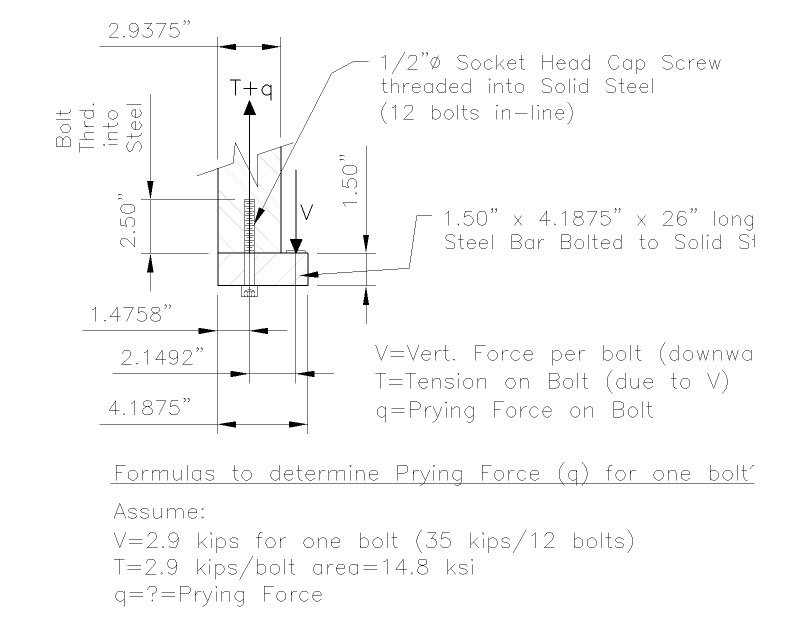jritz
Civil/Environmental
- Apr 23, 2012
- 12
Please see attached sketch.
I am not familiar with how to determine the prying force. Can someone please show me how to calculate the prying force on the bolt in the attached sketch.
Thank you in advance.[URL unfurl="true"]https://res.cloudinary.com/engineering-com/image/upload/v1554498030/tips/Prying_Force_on_Bolt_cc80gn.pdf[/url]
I am not familiar with how to determine the prying force. Can someone please show me how to calculate the prying force on the bolt in the attached sketch.
Thank you in advance.[URL unfurl="true"]https://res.cloudinary.com/engineering-com/image/upload/v1554498030/tips/Prying_Force_on_Bolt_cc80gn.pdf[/url]

